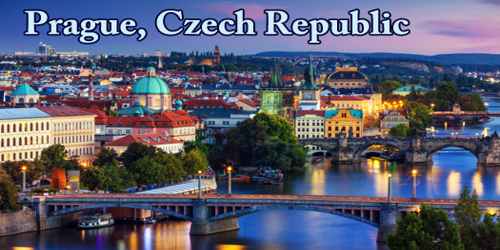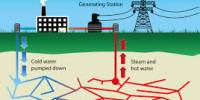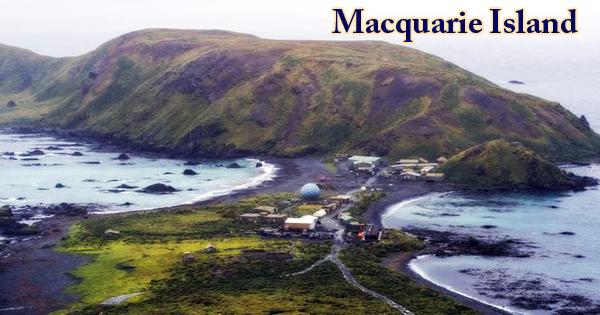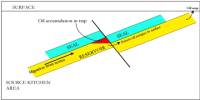Prague (/prɑːɡ/; Czech: Praha (ˈpraɦa), German: Prag, Latin: Praga) is Czech Republic’s beautiful capital and largest city, also known as Zlata Praha (Golden Prague), is one of the most charming cities in central Europe. It is the 13th largest city in the European Union and the historical capital of Bohemia. Situated on the Vltava River, Prague is home to about 1.3 million people, while its metropolitan area is estimated to have a population of 2.7 million. The city has a temperate oceanic climate, with relatively warm summers and chilly winters.
Lying at the heart of Europe, it is one of the continent’s finest cities and the major Czech economic and cultural center. The city has a rich architectural heritage that reflects both the uncertain currents of history in Bohemia and an urban life extending back more than 1,000 years.
The city of Prague (Praha) is the dream destination of every traveler and is one of the most popular holiday destinations around the world. The city offers something for everyone and each one of us will surely find something to love there. The majestic Prague Castle is overlooking the beautiful river Vltava that bends picturesquely through the city and can be crossed via 18 bridges. The most famous bridge is the iconic Charles Bridge.
All year round tourists from all over the world are exploring this fairy-tale-like metropolis with its maze of narrow cobblestone streets and historical buildings dated back as far as the 9th century. Visit Old Town Square where hundreds of visitors are rubbing shoulders to watch the hourly appearance of the apostles in one of the oldest astronomical clocks in the world.

Prague is a political, cultural, and economic center of central Europe complete with a rich history. Founded during the Romanesque and flourishing by the Gothic, Renaissance, and Baroque eras, Prague was the capital of the Kingdom of Bohemia and the main residence of several Holy Roman Emperors, most notably of Charles IV (r. 1346–1378). It was an important city to the Habsburg Monarchy and its Austro-Hungarian Empire. The city played major roles in the Bohemian and Protestant Reformation, the Thirty Years’ War and in 20th-century history as the capital of Czechoslovakia between the World Wars and the post-war Communist era.
Prague is home to a number of well-known cultural attractions, many of which survived the violence and destruction of 20th-century Europe. Main attractions include Prague Castle, Charles Bridge, Old Town Square with the Prague astronomical clock, the Jewish Quarter, Petřín hill, and Vyšehrad. Since 1992, the extensive historic center of Prague has been included in the UNESCO list of World Heritage Sites.
Prague is famous for its cultural life. Wolfgang Amadeus Mozart lived there, and his Prague Symphony and Don Giovanni were first performed in the city. In addition, the lyric music of the great Czech composers Bedřich Smetana, Antonín Dvořák, and Leoš Janáček is commemorated each year in a spring music festival. The U kalicha (“At the Chalice”) beer parlor, which is still popular with local residents and tourists alike, provided the setting for the humorously antiauthoritarian activities of Schweik, immortalized by the novelist Jaroslav Hašek in The Good Soldier Schweik. The writings of Franz Kafka, dwelling in a different way on the dilemmas and predicaments of modern life, also seem indissolubly linked with life in this city.
The city has more than ten major museums, along with numerous theatres, galleries, cinemas, and other historical exhibits. An extensive modern public transportation system connects the city. It is home to a wide range of public and private schools, including Charles University in Prague, the oldest university in Central Europe.
Geography –
The Czech Republic is geographically located in the center of Europe, surrounded by Austria, Slovakia, Poland, and Germany, with almost the same distance from the Baltic Sea, the Mediterranean, and the North Sea. Prague is the largest and the capital city of the Czech Republic. Rich in its historical heritage, this attractive city is the commercial and cultural center of the Czech Republic.
The Czech name Praha is derived from an old Slavic word, práh, which means “ford” or “rapid”, referring to the city’s origin at a crossing point of the Vltava river. The same etymology is associated with the Praga district of Warsaw.
The English spelling of the city’s name is borrowed from French. It is written in a verse of The Beleaguered City by Longfellow (1839) and also in the limerick There was an Old Lady of Prague by Edward Lear (1846) and in the 19th and early 20th centuries, it was pronounced in English with the same pronunciation, for example by Lady Diana Cooper (born 1892) on Desert Island Discs in 1969.
Prague is also called the “City of a Hundred Spires”, based on a count by 19th-century mathematician Bernard Bolzano; today’s count is estimated by the Prague Information Service at 500. Nicknames for Prague have also included: the Golden City, the Mother of Cities, and the Heart of Europe.

Prague (Praha) is situated in the heart of the Bohemian Basin which has a ring of mountainous surroundings. The fertile soil, natural water streams, and resources have played a vital role in the city’s early development. The Vlata River runs through the city influencing a breathtaking landscape and natural parks. Prague is approximately at the same latitude as Frankfurt, Germany; Paris, France; and Vancouver, Canada.
The Prague metropolitan area covers 192 square miles (496 square kilometers). The city’s core, with its historic buildings, bridges, and museums, is a major center of employment and traffic congestion. Around the core is a mixed zone of industrial and residential areas, containing about half the city’s population and nearly half its jobs. Surrounding this area is the outer city development zone, and beyond this is yet another zone of development containing new industrial areas, parks and recreation areas, and sports facilities. Finally, there is a belt of agricultural land and open countryside, where farms and market gardening projects satisfy Prague’s demand for food.
Prague comprises of four main areas which are scattered just south of the river bend. The eastern bank features the Old Town (Staré město) with the Old Town Square, the New Town (Nové město) with Wenceslas Square and the Jewish Quarter.
Charles Bridge connects the eastern and western banks, which is a popular attraction in Prague used by many tourists whilst exploring the city’s historical sites. The western bank features the medieval castle region (Hradčany) which is home to the famous Prague Castle, and below the Lesser Town; the little quarter of Malá Strana.
The residential and industrial areas of Prague occupy the old city center and move up to some distance along the Vltava River. These neighborhoods outlining the city center are 19th Century – 20th Century suburbs: Vinohardy, Zizlov, Karlin, Holesovice, Bubenec Dejvice, as well as the industrial area of Smichov.
Climate: Prague has an oceanic climate (Köppen: Cfb) with humid continental (Dfb) influences, defined as such by the 0 °C (32 °F) isotherm. The lowest point in the city is 623 feet (190 meters) above sea level, and the highest point is 1,247 feet (380 meters) on White Mountain (Bílá hora). Weather in Prague is mild to cold with rainfall throughout the year.
The climate of Prague is typically mid-continental, with temperatures there averaging 67 °F (19.3 °C) in July and 31 °F (−0.6 °C) in January. Precipitation in Prague (and most of the Bohemian lowland) is rather low (just over 500 mm per year) since it is located in the rain shadow of the Sudetes and other mountain ranges. The driest season is usually winter while late spring and summer can bring quite heavy rain, especially in the form of thundershowers. Temperature inversions are relatively common between mid-October and mid-March bringing foggy, cold days, and sometimes moderate air pollution. Prague is also a windy city with common sustained western winds and an average wind speed of 16 km/h (10 mph) that often help break temperature inversions and clear the air in cold months.
Economy and Culture –
As on 2015, the metropolitan area of Prague consists of over 2.1 million people and the population of Prague city is over 1.26 million. Most of the city’s population consists of Czechs. There is a minority of Roma and Slovak communities in and around the city center. Also, there is a considerable amount of expatriates such as Germans and Americans who have settled for work purposes in Prague.
Prague’s economy accounts for 25% of the Czech GDP making it the highest performing regional economy of the country. As of 2017, its GDP per capita in purchasing power standard is €56,200, making it the sixth best-performing region in the EU at 182.4 percent of the EU-28 average in 2016. There are 800,000 employees in Prague, including 120,000 commuters. The number of (legally registered) foreign residents in Prague has been increasing in spite of the country’s economic downturn. As of March 2010, 148,035 foreign workers were reported to be living in the city making up about 18 percent of the workforce, up from 131,132 in 2008. Approximately one-fifth of all investment in the Czech Republic takes place in the city.
As part of a decentralization plan for the city’s growth, since the 1950s industrial districts and warehouses have been located or relocated on the outskirts of Prague. The aim is to provide increased job opportunities in the vicinity of new residential areas, thereby reducing the pressure on the city’s central core.
Almost one-half of the national income from tourism is spent in Prague. The city offers approximately 73,000 beds in accommodation facilities, most of which were built after 1990, including almost 51,000 beds in hotels and boarding houses.
Transportation: Much of the inner-city transportation is handled by bus, tram, and subway (metro) systems, which are inexpensive and subsidized. Despite the efforts to meet the demands of the growing population with an adequate public transportation system, the number of passenger cars and commercial vehicles has increased, resulting in plans for a major urban motorway system to include 10 radial arteries connecting Prague with the national road network.
Prague is one of the nation’s major railway junctions, with three main stations and three freight transport circuits. The international airport at nearby Ruzyně was expanded and modernized in the 1960s to serve as a hub at the center of Europe. A new port has been built at the confluence of the Vltava and Berounka rivers. The passenger boats that ply the Vltava during the summer are a popular tourist attraction.
Business services like finances, information technologies, real estate, consulting, and advertising have expanded. The tourism industry which includes hotels, restaurants, tours, and travel agencies is playing an exceptional role in the economy, contributing nearly 60% to Prague’s overall income.
Prague has a lower unemployment rate than the rest of the country. Even though jobs have declined in the manufacturing sector, Prague still holds the largest industrial center in the Czech Republic.
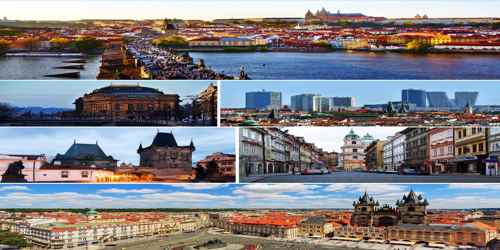
Culture –
Prague has a renowned and active musical life, which reaches a high point each year in the internationally known spring music festival. The city’s fine orchestras the Prague Symphony and the Czech Philharmonic have won reputations abroad. The theatrical traditions are also strong, with more than 20 well-attended theatres in the city. There are also many museums and galleries, and a Palace of Culture was completed in 1981.
Perhaps the greatest treasures of the city, however, are the 2,000 officially recognized architectural and artistic monuments, ranging in period from the Romanesque through the Gothic to the Baroque, Rococo, Classical, and Neoclassical. The interiors of the buildings, which often house major art collections, have been restored since 1945. The most notable Romanesque monument is probably the 10th-century Church of St. George, behind the north wall of Hradčany. To the west is its more massive successor, the basically Gothic St. Vitus’s Cathedral, the twin spires of which dominate the city skyline. Other Gothic monuments include the Týn Church on Staroměstské (“Old Town”) Square; the elegant Powder Tower, marking the former city walls in what is now the busy Příkopy shopping area; the restored Bethlehem Chapel, where Jan Hus preached in the 15th century; and the St. Agnes Convent, built-in 1234 and notable for its collection of 14th-century paintings. The Old-New Synagogue and the tumbling, crowded gravestones of the Old Jewish Cemetery Europe’s oldest betoken the strong Jewish tradition in Prague life.
The city has many world-class museums, including the National Museum (Národní muzeum), the Museum of the Capital City of Prague, the Jewish Museum in Prague, the Alfons Mucha Museum, the African-Prague Museum, the Museum of Decorative Arts in Prague, the Náprstek Museum (Náprstkovo Muzeum), the Josef Sudek Gallery and The Josef Sudek Studio, the National Library and the National Gallery, which manages the largest collection of art in the Czech Republic.
There are hundreds of concert halls, galleries, cinemas and music clubs in the city. It hosts music festivals including the Prague Spring International Music Festival, the Prague Autumn International Music Festival, the Prague International Organ Festival, and the Prague International Jazz Festival. Film festivals include the Febiofest, the One World Film Festival, and Echoes of the Karlovy Vary International Film Festival. The city also hosts the Prague Writers’ Festival, the Prague Folklore Days, Prague Advent Choral Meeting the Summer Shakespeare Festival, the Prague Fringe Festival, the World Roma Festival, as well as the hundreds of Vernissages and fashion shows.
Baroque buildings are the city’s greatest single artistic treasure, among them the splendid Valdštejn and Clam-Gallas palaces, St. Nicholas Church, and the Antonín Dvořák Museum. The geometric tiling of the Golz-Kinský Palace facade provides a distinctive glimpse of the Rococo style. Classical buildings include the Bedřich Smetana Museum on the riverside and the elegant Belvedere Palace (the former Royal Summer Palace). The National Museum and the National Theatre are the main Neoclassical buildings.
With the growth of low-cost airlines in Europe, Prague has become a weekend city destination allowing tourists to visit its museums and cultural sites as well as try its Czech beers and cuisine. The city has many buildings by renowned architects, including Adolf Loos (Villa Müller), Frank O. Gehry (Dancing House), and Jean Nouvel (Golden Angel).
There are plenty of festivals and events held throughout the year attracting thousands of visitors from inside and outside the country and the continent. Major events taking place in Prague are opera performances, various exhibitions, classical or modern musical concerts, and film festivals as well as plenty of other arts and cultural events.
Prague is classified as an “Alpha-“ global city according to GaWC studies, comparable to Vienna, Manila, and Washington, D.C. Prague ranked sixth in the Tripadvisor world list of best destinations in 2016. Its rich history makes it a popular tourist destination, and the city receives more than 8.4 million international visitors annually, as of 2017.
Information Sources:
